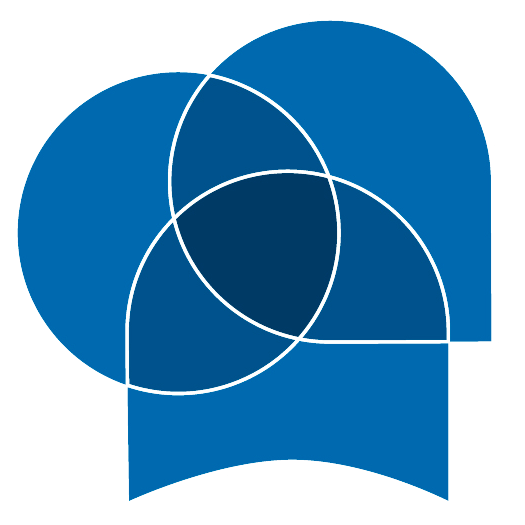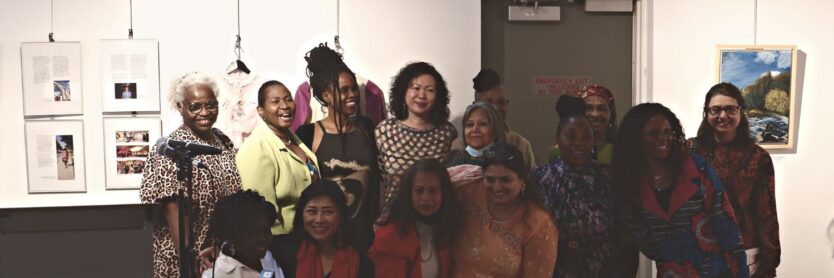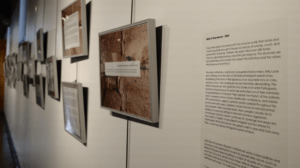The following case study recording is from the ‘Innovating with Collections Online’ cohort member Lisa Randall, Museum Administrator for Todmorden Mills and the Market Gallery, Toronto History Museums.
Throughout the programme, Lisa’s goal was to take the learnings from the workshops and mentorship sessions and integrate them into the ‘Women of Courage’ project in partnership with CultureLink. This was done by working with Doug Friesen on creating soundscapes for the exhibition, while gaining a deeper understanding of the impact they bring on sharing stories.
Transcript
My name is Lisa Randall and I am the Museum Administrator for two City of Toronto sites, which are Todmorden Mills heritage site, and Museum and the Market Gallery in St. Lawrence Market.
Our project goal was taking the learnings that I was being exposed to in the mentorship into a project called the Women of Courage project, which was concurrently coming together as this mentorship was happening. So the timing was rather exquisite.
The activities that I participated in to support this goal was initially to just to participate in the mentorship session that included Doug Friesen. And he shared with the group a lot of information about soundscapes and the impact, and the difference that soundscapes bring to exhibitions, and really talking about how the senses tap into a much different experience for people than some. Each sense has very different qualities and taps into different things for the visitor. And so then the next step that followed that, was me going back to our Community Partners, which was CultureLink settlement and community services. At this point, we were well into the exhibit and myself and one of my colleagues we’re helping co-curate it. And so we brought in this element and they’re a settlement agency supporting newcomers get settled, they’re not used to doing exhibits. So it was a really big deal for them to be putting together an exhibit. So when I brought something else forward, I really convinced them how lovely and how important this could be. And so a select group of participants came together with Doug, and did a special Workshop that focused on what actually is a soundscape, what are the components, and then participants went about collecting sounds that were pertinent to their lives that you know reflected them either here in Canada or back home. Some of them actually came in internationally as submissions. I believe one came from an African country. I forget the country at this point, but it was remarkable how poignant and how impactful different recordings are and how they can immediately call up such different environments and impact the listener. And so then it went from there, Doug did a workshop with them as I mentioned, and they learned and they really opened up to the idea. And when they began to collect sounds it even further blossomed for them in terms of their understanding and their imagination about what they could capture and how it could speak to their culture, and speak to back home, and speak to coming to Canada. And sounds that people miss and sounds that are so much a part of certain parts of our lives. And then from there Doug was very very helpful in doing the editing process and putting the, I think that was about five or six different pieces together of varying lengths. One was very short and some were quite a bit longer, and then they’ve been posted. They were part of the exhibit, and then they were also posted on the CultureLink website so that people can go in on the internet and listen to these soundscapes as well.
The challenges that we faced throughout the project, I might have barely touched upon it in the first question, but the challenge that we faced was convincing this group what an amazing component this would be, because they were in an environment they had not been in previously. Putting an exhibit together was not something they do normally although I think they are looking in every way to continue doing this because it so embodies their work. But I really, I really did have to convince the staff at CultureLink initially. And then after we had done that, then once they were on board, they immediately thought of specific participant candidates to participate in the soundscapes and then it just flowed from there. We set up meetings and then it was really basically put in Doug’s hands and I wasn’t at all of those but I fully believed in it. And so I think the challenge is taking something that you’re learning in the moment, and applying it, and then being able to bring everybody on board and convince them that is really really a valuable opportunity. And those people that participated in it, just loved the experience. So that convinced me not only the importance of this for this exhibit but how we could, you know, look at using it in other ways in the future. So that was one challenge.
I would say another challenge was exhibiting it in the best possible way in the actual Women of Courage exhibit. And when there’s several people helping curate, you know, they’re slightly different visions about what, how it should happen, and we had already two audio pieces in the exhibit itself. There was a decision that was made to put this on a QR code so that people could watch it on their phone, and I would say that if you’re going to present any kind of part of a soundscape exhibit within a visual exhibit – that there has to be really strong considerations of how to separate this somehow for the patron who’s coming in for the first time ever so that they don’t have to make a great transition looking at a visual piece to a sound piece. And so I guess the challenge is probably in partnership and collaboration whilst meeting deadlines and exhibit openings.
And so I guess that the dialogue around the best way to exhibit certain pieces is another one of the challenges, I would say, because I don’t know how many people actually use their phone, went on to a QR code, and listened and heard these beautiful soundscapes that so much energy was put into. So it needs its own special physical presence in order for people to be drawn into its soundscape presence. And I would say headphones although in the time of Covid that’s another layer of challenge. We didn’t want to present the public with something that many people would be handling.
Main takeaways from the project were how important it is to work with community groups that may not have done an exhibit before but have critical stories to tell in the museums. And so having a first exhibit only happens once with the community group, and once they’ve had a taste of that, and they’ve literally had their hands on it with a lot of support from a staff at Todmorden Mills about how to go about doing this. The last time I ran into the project manager of this, she was talking about writing proposals to do more and asking if they could come back. And so, you know, moving through the obstacles and the challenges is really important. But also making the space again for the community groups that we really want and need to see and experience on-site, and provide as an offering to the general public as part of our service for the City of Toronto and for museums as places of belonging.
Another takeaway that I wasn’t really expecting at first is how wonderful this kind of creation of soundscape might be for our emerging youth program. Because youth are very very creative and they have the capacity on their phone to record themselves in the moment of their lives, and I’m going to bring this up and I think I’ve brought it up to the staff team already, but I’m going to bring it up and maybe reach to Doug because, as geography would have it, he actually works very very close to Todmorden Mills and I might reach to him and see how can we incorporate this more deeply into other activities at the Museum site.
Initially, we had thought that this project would be at Todmorden Mills for four weeks and that would be the exhibit. And then as we became closer and closer to the opening date, it occurred to me all of this energy, and in addition to the fact CultureLink had about four or five different cohorts of people coming in doing an eight-week session with them, and then coming out of it with pieces of Art, and that one of those cohorts did not even make it into the exhibit because things were pushed back a little bit due to Covid. And so I also convinced CultureLink that we should do this at other City of Toronto museum sites because this is a perfect opportunity to maximize our impact with the show. To continue its life to move it to other areas of the city, and then those different museum sites can take that exhibit and reach out locally to them and bring people into the museums to see something that is not normally there. So that was a really really big deal and now I’m even thinking well, the next steps to be a little more precise about it is that the exhibit is now after having left Todmorden Mills. The exhibit is now at Scarborough museum for four weeks, following that it’s moving to Gibson house in North York, following that it’s moving to Montgomery Inn in Etobicoke. So essentially in four very different geographical areas in the city, and who knows what could happen after that because there’s three months of exhibiting going on. And in that time we could have other ideas about where this exhibit should go. I certainly hope we do.
It is basically a success story of doing a partnership collaboration with a settlement agency in the community to bring forward voices that are not normally given space in the museums, that truly belong in the museums to share their stories, and our strategy at Toronto History Museums and Museums and Heritage services at the City of Toronto is to provide space for multiple voices to share their stories. Tell the full story of the citizens of Toronto, and embrace the many rich cultural diversities that change each other’s lives when they tell their stories, because this is fundamental in having multiple voices because not only does it change the offerings in the museum, it changes the group or the individual who’s sharing their story, and it profoundly changes the listener, or the patron, who’s experiencing a story they may not have ever heard before. So it’s very deeply rooted in social development, cultural sharing, multiple perspectives, and it ripples out from there in so many, so many different ways. So going forward – we’re definitely going to reach out to other community groups and use this as a success story that we can share with them, and maybe they won’t do exactly the same thing, but it can inspire them.
In the clip, Lisa Randall breaks down the project:
- Goal
- Activities
- Challenges
- Learnings
- Next Steps
- Impact of work on future projects


